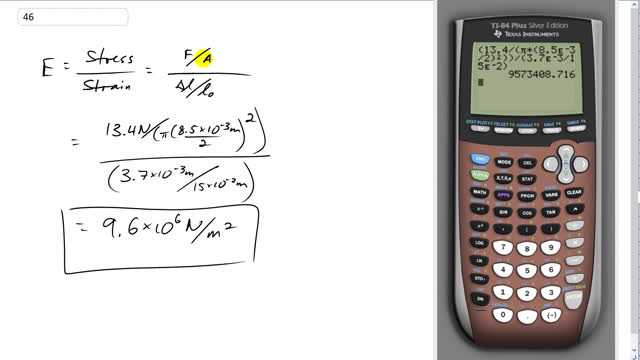
A 15-cm-long tendon was found to stretch 3.7 mm by a force of 13.4 N. The tendon was approximately round with an average diameter of 8.5 mm. Calculate Young’s modulus of this tendon.

In order to watch this solution you need to have a subscription.
This is Giancoli Answers with Mr. Dychko. The Young's modulus or elastic modulus is stress divided by strain and stress is force divided by the cross-sectional area of whatever is having a force exerted on it and divided by the change in length of the object divided by its original length. So this tendon is stretching 3.7 millimeters so I put 3.7 times 10 to the minus 3 meters and divide that by its original length of 15 centimeters which is 15 times 10 to the minus 2 meters. That's the denominator taken care of and the numerator's a bit messy... well, this whole thing is a bit messy because there are fractions within fractions I guess we could, you know, think of this as F over A times l naught over Δl that might make our work a little bit easier to look at but in any case this is what we have and it kind of helps us practice our bracket matching in the calculator. So we have the numerator is 13.4 divided by π times 8.5 times 10 to the minus 3 which is the diameter so we have to divide that by 2 and then square the result of dividing by 2 and then close bracket, close the denominator there and then another closed bracket closes the entire numerator with the 13.4 included. And then divide that by 3.7 times 10 to the minus 3 which is divided by 15 times 10 to the minus 2 and then close that bracket for the entire denominator. 9.6 times 10 to the 6 newtons per square meter is the elastic modulus.